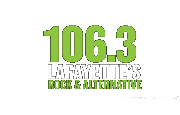The Launch Box featuring Lee Harvey Osmond
If you like: Leonard Cohen, Cowboy Junkies, Lucinda Williams
Ever wonder what a lone, bad ass cowboy riding across the plain during a downpour in the pitch black of night would have playing on his iPod? Only Good Song lent that fine descriptor in their review of the 2009 debut of Lee Harvey Osmond – the psychedelic folk project of musician Tom Wilson, a veteran of the Canadian music scene.
Wilson’s eclectic musical style has ranged from the psychobilly / R&B sounds of the Florida Razors, to the western/roots style of Blackie and the Rodeo Kings and the funk/blues inspired rock of the much-loved Junkhouse. He also released solo albums in 2001 and 2006, and his 2005 collaboration with Bob Lanois, The Shack Recordings, was critically acclaimed.
His most recent project, the artist collective Lee Harvey Osmond – a rotating posse 17 strong – first took shape with Wilson in his Lee Harvey Osmond persona backed by Michael Timmins of Cowboy Junkies and Josh Finlayson of Skydiggers. They wrote, recorded and released the debut album, A Quiet Evil, in 2009 on Latent Recordings.
The band’s current touring configuration consists of Wilson on lead vocals and guitar, Aaron Goldstein on guitar and pedal steel (who also contributed to A Quiet Evil), Cam Malcolm on bass guitar, Brent Titcomb on percussion and vocals and Ray Farrugia on drums.
Their second album, The Folk Sinner, was released on January 15, 2013, and was nominated for a Juno Award in the Roots & Traditional Album of the Year – Group category in 2014.
A third album, Beautiful Scars, was released on April 7, 2015. It was long-listed for a 2015 Polaris Music Prize. Mark Brennan says in his album review on Ride the Tempo:
He looks like a wizened, well-traveled troubadour and has a voice that has endured several lifetimes. There’s no need to see visible scars – you know they are etched into his being.
Speaking of his vocals, there are few different versions of Tom Wilson that appear on ‘Beautiful Scars’. On songs like “Blue Moon Drive” he is a crooner, with a voice as smooth and deep as a bottomless glass of Guinness, but on other tunes, such as “Bottom of Our Love”, he comes across as a croaky country balladeer, as weather-beaten as floor mat in an ancient pick-up truck. Then again, on “Shake the Hand” he’s a raunchy southern rocker, with all the raspiness that goes along with having to get yourself heard above the din of crowded Texas bar.
That sounds like a variety of styles, and indeed there is a nice mixture of blues, country, folk, rock, what have you. And yet there is an over-arching mood – a rootsy broodiness that permeates the air, bringing the songs together with the common thread of delectable despair.



